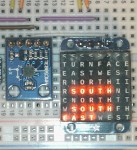 Microsoft Windows 10 contains a new behavior called “Wi-Fi Sense“. If you connect to an 802.11 network encrypted using a pre-shared key, Wi-Fi Sense will offer to distribute that key to your Outlook contacts, Skype contacts and Facebook friends. While it is (nominally) opt-in for newly-added networks, this “sharing” is the default behavior for existing networks when migrating from earlier Windows versions to Windows 10.
Microsoft Windows 10 contains a new behavior called “Wi-Fi Sense“. If you connect to an 802.11 network encrypted using a pre-shared key, Wi-Fi Sense will offer to distribute that key to your Outlook contacts, Skype contacts and Facebook friends. While it is (nominally) opt-in for newly-added networks, this “sharing” is the default behavior for existing networks when migrating from earlier Windows versions to Windows 10.
As an administrator of an 802.11 network you likely would prefer that this “sharing” not happen with the credentials for your network. After the break, I’ll discuss why allowing “Wi-Fi Sense” is such a bad idea, and how you as a network administrator can mitigate the risks it presents.






